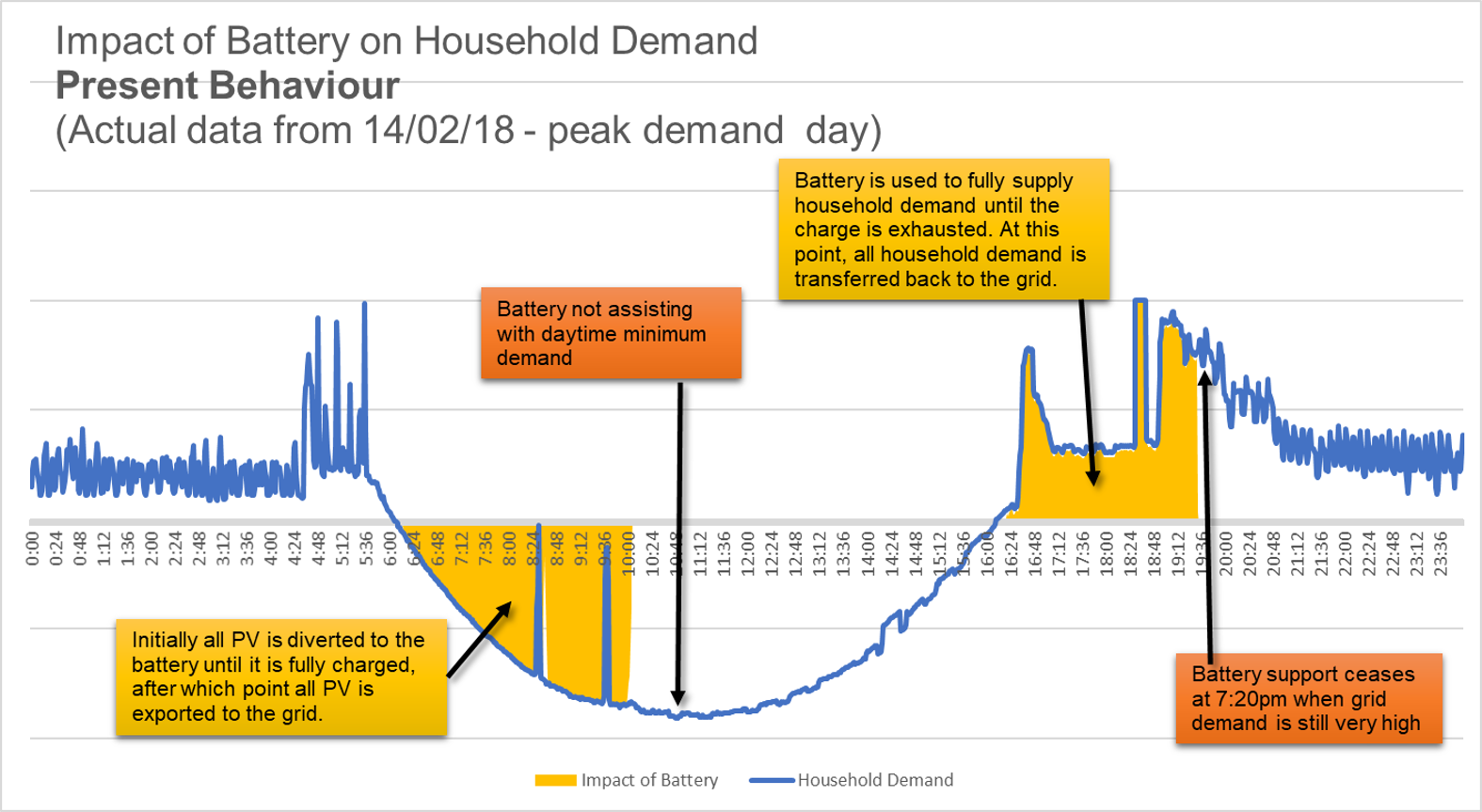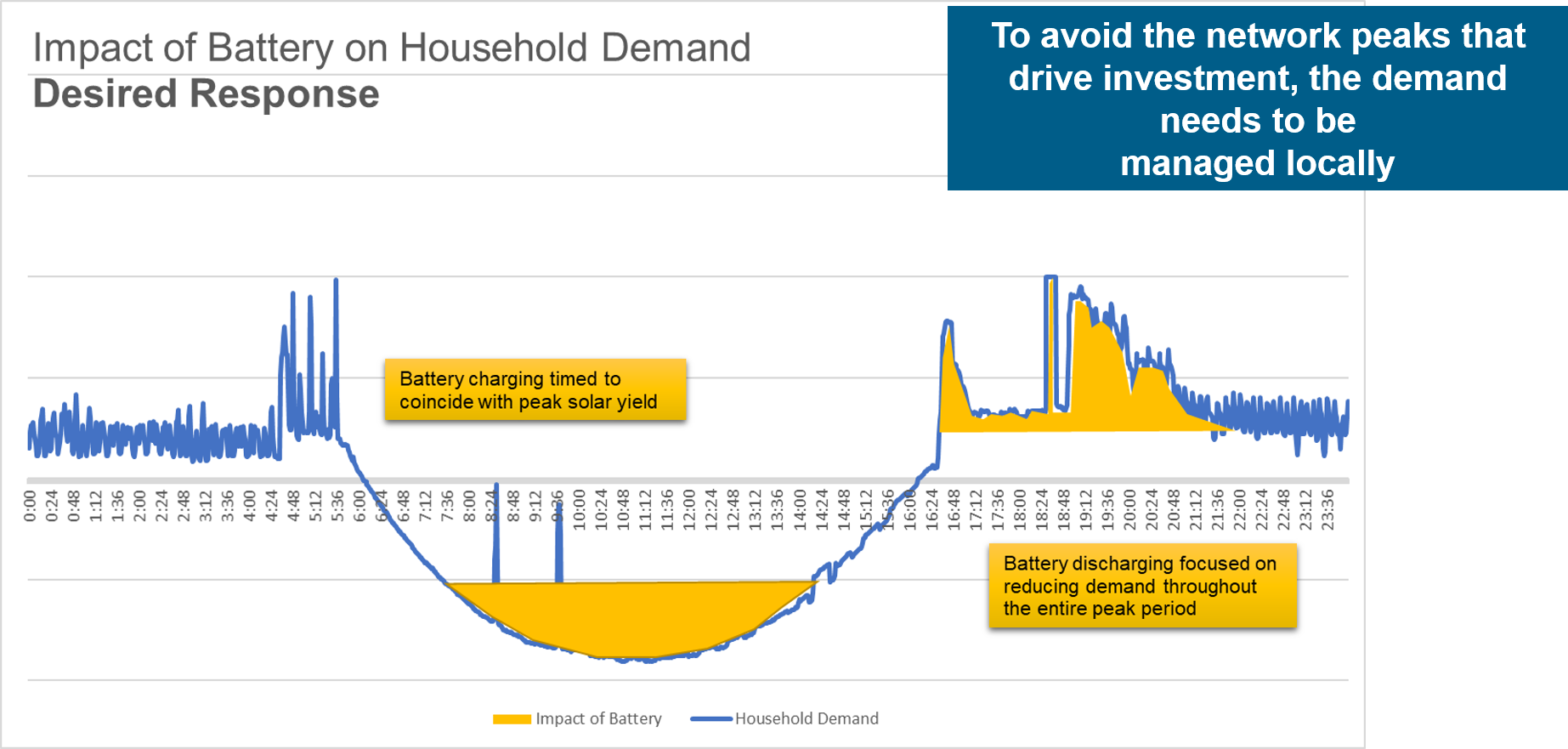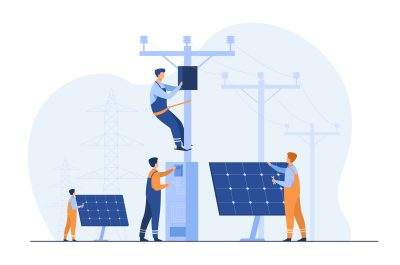Batteries – let’s make them sweet not sour
Batteries can be like the grid’s sugar hit.
They deliver quick, short burst of energy. The problem is the sugar crash.
Like serving red cordial at a six-year-old’s birthday party, the energy crash hits hard and all at once — not good news for the parents/grid.
There are currently no useful incentives to smooth battery usage.
Most systems start to charge as soon as the house’s solar starts generating in the morning and discharge rapidly, early in the evening — all of them in a similar way and all at the same time.
Often these cycles are short, meaning both imports and exports are reduced for only short periods, generally not at ideal times.
If left unchecked, this trend will lead to more investment in grid infrastructure and on-call generation, such as gas or pumped hydro. This is expensive.
What if we adjusted our battery usage to smooth out demand?
What happens now?
We can see what currently happens in a typical household using actual data from Powerlink (see Figure 1).
The blue line is household demand, and the yellow shading shows when the battery is either charging or discharging.
In this scenario, the house has a solar PV system and battery storage capacity. Most batteries are installed with solar.
Morning
In the morning, people typically leave for work and demand drops.
As the sun rises, solar generation kicks in.
The battery begins charging at its maximum rate, soaking up all the excess solar generation.
After a few hours, the battery is full, and from then the solar generation is fully exported to the grid.
This means the household is now exporting solar PV at its maximum capacity during the time of minimum demand.
The minimum demand has not changed – the battery is not helping manage local voltage and the congestion issues caused by solar generation.

Figure 1: Impact of battery on household demand – Present Behavior (Source: Powerlink analysis)
Evening
The opposite happens at night.
People return home and begin turning on appliances leading to a spike in demand.
The fully charged battery system discharges at its maximum rate until it is depleted.
For the remainder of the evening, the household is now importing electricity, a time when we have least generation capacity in the grid.
The peak demand remains high.
Depending on the size of the battery, the household may switch from battery supply back to grid supply at the time of peak demand, exactly what we don’t want to see happening.
What do we want to happen?
If this example happens on a large scale, the sharp changes in solar import and exports could be determinantal the wider grid. These rapid shifts in demand may be difficult to manage and risk system stability.
Instead of adding to the peaks and troughs, it would be great if batteries can be used to smooth out the grid.
Figure 2 shows how the system should ideally look.
The desired response from the system perspective is to reduce the peak export and consumption of the household, without a net change to the amount of electricity imported and exported.
Morning
Rather than the battery immediately charging at its maximum rate, it charges slower but for longer.
This could be done by partially charging and partially exporting.
Ideally, the rate of charging would slowly increase to a maximum at around 11 am. Charging would then taper off again through the afternoon.
This could also be coupled with the use of “smart” appliance, such as washing machines, dishwashers, pool pumps or water heaters, to run when solar PV is generating.
The result is a smoother demand curve meaning the battery is having more of an impact when the grid needs it.

Figure 2: Impact of battery on household demand – Desired response (Source: Powerlink analysis)
Evening
At the end of the day when the customer returns home, they have a full battery.
Instead of this battery discharging at its maximum rate, the local system partially imports and partially draws from the battery. This smooths the evening demand.
Overall the customer has not had to export any less or import any more electricity than normal, but the entire grid benefits from smoother demand.
How do we achieve this?
This concept of demand shifting is not new and is something we’ve written about before as ways to address the duck curve that exists because of the high penetration of solar in our grid.
The problem faced here is coordinating this response for millions of individual customers and systems around the grid.
Generally speaking, we’d prefer carrots to sticks – it is not optimal to regularly restrict exports of clean energy nor to try and force customers to only part-supply from their charged batteries.
What we could do is introduce demand-based price signals for both import or export, which would enable those with solar and battery systems to save money – while delivering benefits for all electricity customers.
Tariffs are being looked at in other jurisdictions around the world, such as Hawaii, to incentivise optimal battery use.
Overall benefits
If we can incentivise battery owners to flatten demand, we can avoid building unnecessary infrastructure.
This means all customers don’t pay more than they need to while maintaining a stable grid.
In the long term, smarter technology will combine with battery storage to offer cheaper and more flexible grid management solutions.
For the moment, we need to dilute the cordial to avoid hyperactivity.

